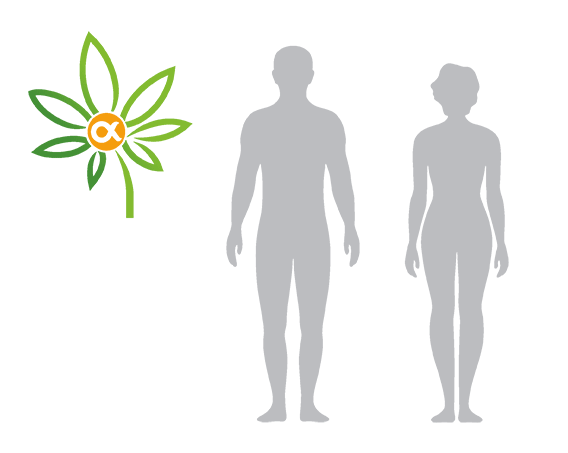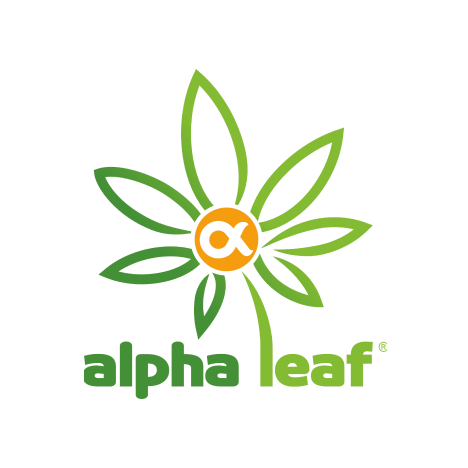- What are Trichomes?
- What is CBD (cannabidiol)?
- What are cannabinoids?
- What is CBDA?
- What are Terpenes?
- What are Flavonoids?
- The Entourage effect
- How does CBD work in the brain and body?
- Can CBD make you feel high?
- What are some conditions CBD can potentially treat?
- Is CBD safe for pets?
- What’s the difference between hemp CBD and cannabis-derived CBD?
- What’s the right dose of CBD?
- Does CBD show up on drug tests?
The complete guide to CBD (cannabidiol)
CBD (cannabidiol) is a therapeutic compound produced by cannabis. It is commonly extracted and processed into oils, gummies, topicals, and other products that have no doubt sparked your curiosity. And with curiosity comes a load of questions.
This guide is here to lend a hand and provide answers to the most common questions about CBD, starting with the most basic so you never feel lost. You can start from the beginning or jump straight to whichever CBD question is currently burning hottest for you.
Table of contents


What is CBD (cannabidiol)?
CBD, or cannabidiol, is a non-intoxicating compound found in cannabis and hemp. CBD oils, gummies, and other products are continuing to grow in popularity as ways to manage anxiety, insomnia, stress, pain, and other symptoms.
We typically associate cannabis with getting stoned, but CBD can be extracted from the plant to make products that come without the high or the smoke. The molecule in cannabis that gets us high is called THC (tetrahydrocannabinol), and nowadays, you can turn to cannabis-derived CBD products with little to no THC for clear-headed symptom relief.
It’s not just THC and CBD, either—cannabis produces dozens of potentially therapeutic compounds called cannabinoids. We’re slowly getting to know them as legalization spreads, and so far, they seem pretty friendly to us humans and our many ailments.

What are Terpenes?

Terpenes, the aromatic compounds that determine the aroma of many flowers and herbs, give cannabis its characteristic odor and contribute to its flavor.
Cannabis contains more than 150 types of terpenes. Although most terpenes are present only in trace amounts, the most prominent unite to give several varieties of cannabis their unique olfactory profiles.
In addition to providing cannabis with its unique bouquet of aromas, terpenes also perform various functions in the plant and can produce a number of therapeutic and mood-altering effects.
Terpenes play a key role in the growth and survival of a cannabis plant. In addition to producing distinct aromas, these organic compounds also enrich the color and pigmentation of leaves and flowers and contribute to the taste of cannabis.
Terpenes help increase plant attractiveness for some creatures, while preventing others from causing damage.
Humans have long taken advantage of the vibrant aromas associated with terpenes to formulate essential oils for practices such as aromatherapy.
For example, anyone who applies lavender oil – which contains linalool – at home knows that this can help you relax.
The effects of terpenes seem to extend beyond the benefits of well-being and stress relief.
Terpenes have also been identified as a new frontier in cannabis medicine.
All terpenes have unique combinations of therapeutic properties. Unsurprisingly, some of the effects terpenes have on humans are evocative of their function in cannabis and other plants – how to help fight unwanted microbes and pathogens.
Preclinical animal studies and in vitro studies – in test tubes – have identified a number of therapeutic benefits associated with terpenes.
- Antiviral
- Anticancer
- Antimicrobial
- Pain relief


Flavonoids is the designation given to a large group of secondary metabolites of the polyphenol class, low molecular weight components found in several plant species.
Flavonoids help regulate cell activity and fight free radicals that cause oxidative stress in our body.
They help the body function more efficiently, protecting it from toxins and stressors from day to day.
Flavonoids are also powerful antioxidant agents.
Anthocyanidins - prevent heart disease and cancer and are used in phytotherapy for a number of applications including high blood pressure and urinary tract infections.
Flavonols are found in cannabis, peaches, cabbage, tomatoes and broccoli - antioxidant properties.
Flavones protect plants from pests, while providing white and blue pigment in flowers. These flavonoids also appear in cannabis, as well as in parsley, red pepper and chamomile.
Flavanones are flavonoids known for their anti-inflammatory properties, besides presenting potential for cholesterol reduction and weight control.
Flavan-3-ols are packed with nutrients and health benefits. They are found in white, green and black tea, as well as in cocoa and chocolate.
Isoflavones appear in soybeans and some beans and are studied for their connection with the prevention of bone, hormonal and cardiovascular problems.


Can CBD make you feel high?
Unlike THC, CBD is not intoxicating. Why? Both THC and CBD are cannabinoids, but they behave very differently in our bodies.
THC stimulates what are called CB1 receptors. When CB1 receptors are activated, humans generally experience feelings of euphoria—or, for some, anxiety and paranoia. CBD doesn’t activate CB1 receptors, so we don’t feel euphoric, anxious, or stoned when taking it.
In fact, CBD can actually reduce THC’s ability to stimulate CB1 receptors, helping to block some of THC’s not-so-fun side effects. For those prone to anxiety and forgetfulness when consuming cannabis, CBD is a good tool to keep on-hand.
What are some conditions CBD can potentially treat?
CBD is a compound with diverse medical potential, so it’s no surprise that it’s become a trendy “cure-all” in the wellness space of late. Considering there’s currently no supervision over ingredients in CBD oil and other products, or the medical claims tied to them, it’s OK to be sceptical. We encourage that.
These claims often begin with anecdotal evidence, early research, and animal studies, but human studies are finally starting to fill in the gaps around CBD’s touted benefits. With that caveat in mind, here’s what we understand about CBD’s potential therapeutic applications.
CBD and Anxiety
CBD and Pain
CBD and Insomnia
CBD and Epileptic seizures


What’s the difference between hemp CBD and cannabis-derived CBD?
When talking about hemp, we’re referring to the low-resin industrial crop commonly used to make clothing, textiles, food, and other materials.
And in this context, we’re using the word marijuana to describe the high-resin plants that are grown specifically for medical consumption or enjoyment.


